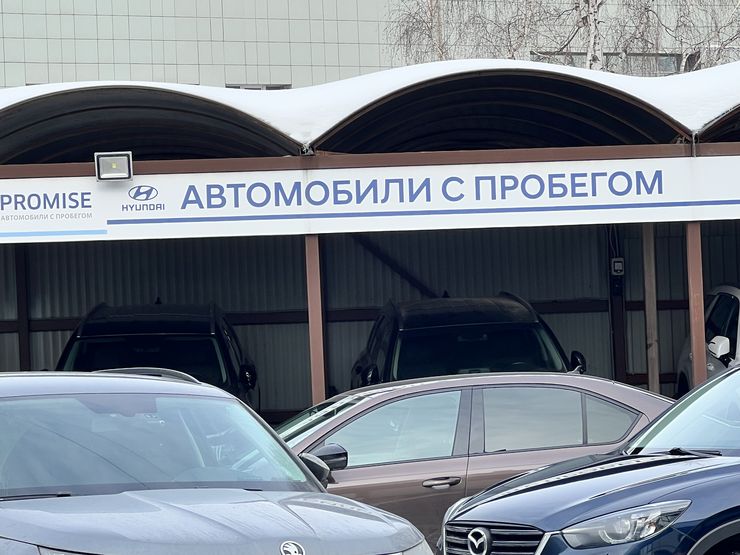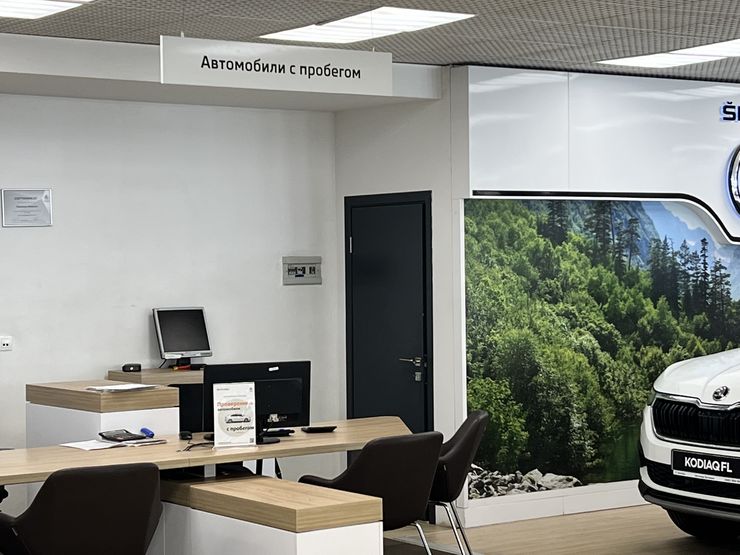How Russian drivers are transferred to old and very old cars
- March 29, 2023
- 0
The growth of used car sales in Russia is far from encouraging, but rather depressing. In fact, it is a result of either a sharp rise in the
The growth of used car sales in Russia is far from encouraging, but rather depressing. In fact, it is a result of either a sharp rise in the

In February of this year, according to the Avtostat agency, Russian motorists bought just over 394,000 used cars, which is 4.6% more than in the same period last year. And this isn’t the first month in which the battered crews have shown remarkable will to live. In January, for example, their sales growth was 7%. At the same time, the situation with new cars remains depressing: in the last winter month, only 56,000 new cars were lucky – a decrease of 43.4%.
As car expert Igor Morzharetto pointed out to Izvestia, previously in Russia the ratio of new car sales to used car sales was 1:4. Now everyone can count themselves – 1:7. The decline of the market is obvious. However, the sharp roll of the ship from the auto industry to the secondary market is not at all the most unpleasant in the problem that we scooped up with a full spoon.
The problem is that people no longer have enough money even for used vehicles, although today it is not three or four year olds that are considered relatively fresh, but cars under 10 years old. The contents of the wallets of the masses are eloquently evidenced by the fact that in two months of 2023, the number of used car loans issued increased by 32% and the amount of credit funds increased by 55% in monetary terms, which was again told us by Avtostat. A few years ago used cars accounted for 10% of all purchases, now this share is approaching 50%.
Of course, the business did not go without the lobbying intrigues of dealers and bankers. They found themselves at the epicenter of a critical shortage of new cars and were forced to refocus their activities on the hitherto incomplete secondary market. However, the main driver of the process is still the lack of money from buyers, who don’t have enough of their own funds for new or old – as both have gone up in price and salaries have only really risen in Rosstat’s reports.
It is clear that the only real way out of the created conflict can only be the organization of our own production facilities. But this business is precious, unknown and does not promise billions in profit here tomorrow. Therefore, top executives of the automotive industry do not waste mental energy on such plans. It is much easier to convince people with a black eye that everything is not bad after all.
Here, Ilya Nazarov, a senior head of a major European concern, told Rossiyskaya Gazeta: “A new car loses at least 10% of its value at the time of purchase, so in all the years I have never seen a new one in the car industry bought car. In addition, the accumulated ruble inflation for three years, from 2019 to 2022, was almost 20%, that is, your money was depreciated by the same 20%. If we add the costs of CASCO, signalling, tires and car maintenance for three years to this, then this buyer is in a big minus.
If you translate this economic absurdity into Russian, you get something like a statement: a car costs money, and a new one costs more, and a used one is cheaper. Interesting, did anyone else think?
In general, the car, having firmly entered our lives, taught us to look at some things from an unusual angle. If some cunning economist offered us to buy, say, washing machines on the secondary market, we would only twist our finger at the temple in response.
In view of the conversion of Russian drivers to a flea market, the initiative of the association NSRO Ruslom.com looks very funny. She sent a request to the Ministry of Industry and Commerce to restart usage payments.
Director of the association Viktor Kovshevny dreams: “When handing over a retired vehicle to an approved recycling center, it is proposed to issue a certificate for a discount of at least 150,000 rubles for the purchase of a new domestic car with an internal combustion engine and 200,000-300,000 for Russian-made electric cars.” Selling one piece of junk to buy another piece of junk with this money is truly a revolutionary plan. However, the Ministry of Industry and Trade could approve this initiative. That’s why he and the Ministry of Industry and Commerce.


In February of this year, according to the Avtostat agency, Russian motorists bought just over 394,000 used cars, which is 4.6% more than in the same period last year. And this isn’t the first month in which the battered crews have shown remarkable will to live. In January, for example, their sales growth was 7%. At the same time, the situation with new cars remains depressing: in the last winter month, only 56,000 new cars were lucky – a decrease of 43.4%.
As car expert Igor Morzharetto pointed out to Izvestia, previously in Russia the ratio of new car sales to used car sales was 1:4. Now everyone can count themselves – 1:7. The decline of the market is obvious. However, the sharp roll of the ship from the auto industry to the secondary market is not at all the most unpleasant in the problem that we scooped up with a full spoon.
The problem is that people no longer have enough money even for used vehicles, although today it is not three or four year olds that are considered relatively fresh, but cars under 10 years old. The contents of the wallets of the masses are eloquently evidenced by the fact that in two months of 2023, the number of used car loans issued increased by 32% and the amount of credit funds increased by 55% in monetary terms, which was again told us by Avtostat. A few years ago used cars accounted for 10% of all purchases, now this share is approaching 50%.
Of course, the business did not go without the lobbying intrigues of dealers and bankers. They found themselves at the epicenter of a critical shortage of new cars and were forced to refocus their activities on the hitherto incomplete secondary market. However, the main driver of the process is still the lack of money from buyers, who don’t have enough of their own funds for new or old – as both have gone up in price and salaries have only really risen in Rosstat’s reports.
It is clear that the only real way out of the created conflict can only be the organization of our own production facilities. But this business is precious, unknown and does not promise billions in profit here tomorrow. Therefore, top executives of the automotive industry do not waste mental energy on such plans. It is much easier to convince people with a black eye that everything is not bad after all.
Here, Ilya Nazarov, a senior head of a major European concern, told Rossiyskaya Gazeta: “A new car loses at least 10% of its value at the time of purchase, so in all the years I have never seen a new one in the car industry bought car. In addition, the accumulated ruble inflation for three years, from 2019 to 2022, was almost 20%, that is, your money was depreciated by the same 20%. If we add the costs of CASCO, signalling, tires and car maintenance for three years to this, then this buyer is in a big minus.
If you translate this economic absurdity into Russian, you get something like a statement: a car costs money, and a new one costs more, and a used one is cheaper. Interesting, did anyone else think?
In general, the car, having firmly entered our lives, taught us to look at some things from an unusual angle. If some cunning economist offered us to buy, say, washing machines on the secondary market, we would only twist our finger at the temple in response.
In view of the conversion of Russian drivers to a flea market, the initiative of the association NSRO Ruslom.com looks very funny. She sent a request to the Ministry of Industry and Commerce to restart usage payments.
Director of the association Viktor Kovshevny dreams: “When handing over a retired vehicle to an approved recycling center, it is proposed to issue a certificate for a discount of at least 150,000 rubles for the purchase of a new domestic car with an internal combustion engine and 200,000-300,000 for Russian-made electric cars.” Selling a junk for scrap metal to buy another junk with this money is truly a revolutionary plan. However, the Ministry of Industry and Trade could approve this initiative. That’s why he and the Ministry of Industry and Commerce.
Source: Avto Vzglyad
Donald Salinas is an experienced automobile journalist and writer for Div Bracket. He brings his readers the latest news and developments from the world of automobiles, offering a unique and knowledgeable perspective on the latest trends and innovations in the automotive industry.